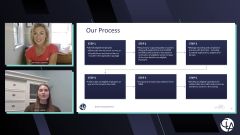
Key insights
- WOTC is a point-of-hire federal tax credit available to employers who invest in individuals from specific groups.
- Employers should understand the qualification criteria, maintain appropriate documentation, and integrate the credit processes into their onboarding and financial practices.
- The credit amount can be substantial — reaching up to $9,600 per eligible new hire — contingent on the specific group the employee belongs to and the hours they work.
The Work Opportunity Tax Credit (WOTC) presents a valuable opportunity for employers to receive tax credits for investing in individuals from specific groups, such as the long-term unemployed, SNAP recipients, or designated community residents. The WOTC program plays a pivotal role in promoting a stable workforce and offering financial relief to employers during challenging economic times.
Explore these potential tax savings and learn how they may benefit your organization.
Understanding WOTC
WOTC is a point-of-hire federal tax credit available to organizations employing individuals from specific groups. Taxable employers claim WOTC as a general business credit, with the ability to carry back the unused credits for one year and forward for 20 years, and it can offset the alternative minimum tax.
Tax-exempt organizations can also take advantage of WOTC for hiring qualified veterans, receiving a refund of Social Security taxes reported on their Form 941.
Employers interested in these benefits should properly understand the qualification criteria, maintain appropriate documentation, and integrate the credit processes into their hiring and financial practices.
Benefits of WOTC
WOTC offers a significant benefit to employers. As a federal hiring credit, it’s available to all for-profit businesses and tax-exempt organizations (for veteran groups).
The credit amount can be substantial — reaching up to $9,600 per eligible new hire — contingent on the specific group the employee belongs to and the hours they work during their first year of employment.
A critical step in capturing the WOTC is integrating WOTC screening into the employer’s onboarding process. This strategic incorporation helps identify eligible hires who meet necessary conditions. A professional service provider can streamline WOTC compliance and help you navigate the complex paperwork and credit deadlines.
WOTC target groups include veterans, SNAP (food stamp) recipients, residents of Empowerment Zones or Rural Renewal Counties, ex-felons, and individuals receiving Supplemental Security Income, among others.
For-profit businesses can use the credit to reduce their business income tax liability, while tax-exempt organizations — specifically when hiring qualified veterans — can apply it against payroll taxes. This flexibility allows a wide range of employers to benefit from WOTC, making it an appealing program for various organizations seeking to enhance their workforce while also receiving a tax benefit.
Claiming WOTC is time-sensitive and requires adherence to specific guidelines. Submitting Form 8850 (Pre-Screening Notice and Certification Request for the Work Opportunity Credit) to the respective state workforce agency within 28 days of the eligible worker’s start date is a pivotal compliance requirement. Employers must be diligent in this process to avoid forfeiting the credit.
How we can help
By incorporating WOTC into their onboarding practices, employers may reduce their tax liability.
CLA’s tax professionals can show you how to navigate the complex landscape of employment-related tax credits to add value and discover potentially significant tax savings for your organization. We can also help you find companion programs at the state and local levels to support your hiring needs.
Contact us
WOTC helps you invest in the long-term success of your employees. Complete the form below to connect with CLA.
If you are unable to see the form below, please complete your submission here.


